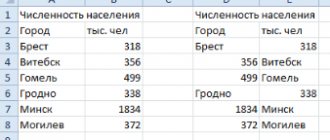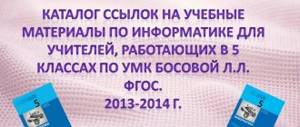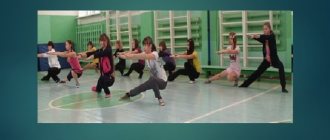TECHNOLOGY LESSON SUMMARY
Topic: “Crochet”.
Product: “Air loops”.
Goals of the teacher:
- mastering the technology of knitting air loops;
- development of the skill of precise and clear movements;
- nurturing interest in the lesson material.
Planned results
- know the technique of knitting air loops;
- know the rules of crochet.
- be able to create a chain of “air loops” using crochet;
- be able to apply the rules of work when crocheting.
— to form a careful attitude towards natural and economic resources;
— develop diligence and responsibility for the quality of one’s activities;
— learn to adequately evaluate your work and the work of your classmates.
Lesson type: “discovery” of new knowledge.
Equipment: colored cardboard, glue, woolen threads, scissors, hook, apple template, pencil, outline, presentation, video.
History of knitting
Knitting
5 30 × 759 — domosed-ka.ru
Knitting
is the process of making products (usually clothing items) from continuous threads by bending them into loops and connecting the loops to each other using simple tools manually (crochet hook , knitting needles , needle ) or on a special machine ( mechanical knitting ).
Knitting as a technique refers to types of weaving.
Knitting with a needle
Crochet
Knitting
knit.com.ua
Mechanical knitting
Knitting is a craft whose history goes back centuries.
All it took was a thread
a pair of knitting needles and skillful hands capable of turning a ball of yarn into beautiful canvases, plain or with bright patterns. It was very convenient for people, so evidence of the development of knitting can be found in ancient times.
Researchers of the history of knitting strive to prove that people really owned and applied the knitting technique long before the beginning of our era.
good-sovets.ru
John William Waterhouse "Penelope Waiting for Odysseus" 1890)
The art of knitting was known to the ancient Greeks during the Trojan War.
Thus, Odysseus’s faithful wife Penelope, waiting for her husband’s return from the campaign, most likely did not weave, but knitted. How else can you explain the fact that she disbanded her work every night, and no one noticed. After all, only a knitted item can be unraveled without noticeable damage to quality.
Most of the stories surrounding the origins of knitting point to the Middle East, from where knitting spread to Europe along the routes of Mediterranean traders, and then to North and South America along with the development of these lands. The earliest known examples of knitted items were found in Egypt and consisted of stockings of complex multi-color knitting made of indigo and white wool. The stockings are dated to 11-14 centuries BC.
Early European knitting
The earliest known knitted items in Europe were made by Muslim knitters employed by members of the Spanish royal family. Among these items were found knitted pillowcases and gloves in the tomb of Prince Fernando de la Cerda, who died in 1275. Moreover, the density and quality of the knitted fabric of the pillowcases is comparable to the density of modern machine-knitted jersey - about twenty loops per inch.
Gloves (Spain, 16th century), hand knitting, silk, metallized thread
Several 14th century European paintings depict the Virgin at her knitting, e.g.
“
Visit of an Angel” 1400-1410 by Master Bertram Minden.
Initially, knitted clothing was highly valued and was inaccessible to mere mortals. Today it’s hard to believe that, for example, in the early Middle Ages, only kings could afford to wear knitted stockings.
stockings from the Middle Ages
Jacket
(Italy, 17th century),
hand knitting, silk
Queen Elizabeth I of England ordered stockings made from silk, a soft, fine and more decorative yarn than coarse wool. The stockings that belonged to her are still preserved, which once again proves the highest quality of the products that were made especially for the queen.
The heyday of knitting as a craft occurred in the 16th century, when it spread widely in Europe and even turned into a profitable trade. And when the knitting machine was invented in 1589 and mass production of knitwear and products made from it began, knitted clothing became available to everyone.
Fortunately, so far none of the machines has been able to replicate the fabric skillfully knitted by the skilled hands of a master, and therefore handmade products are not only valued much higher than factory ones, but are also deservedly elevated to the rank of works of art.
The importance of Scotland in the history of knitting.
Knitting became so widespread among the Scottish population in the 17th and 18th centuries that entire families were involved in the making of sweaters, stockings, socks and other accessories.
The Scots developed a special technique of multicolor colorful patterns. Wool sweaters impregnated with special oils were especially necessary for a large number of local sailors to protect them from adverse working conditions. Scottish knitting provided the basis for knitting techniques such as cable knitting and aran knitting, which were invented in the early 20th century in Ireland.
Industrial Revolution.
With the advent of the Industrial Revolution, thread spinning and weaving moved to factories. Women were employed on machine mechanisms rather than spinning and knitting at home. The factory yarn was more uniform and therefore could be assessed by weight. The city of Nottingham, especially the area known as the lace market, dominated the production of knitwear and machine lace both during the Industrial Revolution and decades later.
1939-1945:
Knitting for victory
In the 60s of the 20th century, knitting came into high fashion. Thanks to the efforts of Ottavio and Rosita Missoni, who created the first ever “Haute Couture” knitwear collection, knitting came onto the catwalk for the first time.
This event was marked by great success and since then many famous fashion houses have given preference to knitwear as an incredibly practical, versatile and noble material.
Missoni pattern
Missoni Spring 2011
Ottavio and Rosita Missoni
80s: Forgotten traditions
The appearance of a large number of clothes knitted on machines practically suspended the existence of hand knitting. Its popularity also fell due to its high cost: the price of a finished knitted product did not exceed, and sometimes was significantly less than the price of yarn and patterns for hand knitting.
Twenty first century:
Renaissance
In the twenty-first century
hand knitting has been revived.
A huge selection of wool yarn has appeared on sale: alpaca, angora, mohair, merino; plant fibers: mainly cotton, bamboo,
silks.
www.knit.com.ua
In addition, yarn manufacturers began to produce very thick yarn, items from which are quickly knitted on thick knitting needles and look chic, which brings knitters great satisfaction from knitting.
Nowadays, knitting as a type of needlework continues to develop: new materials are being actively introduced, patterns are being developed, and all kinds of accessories are made from knitwear - from hats to shoes.
Surprisingly, over the past few years, knitting has turned from a traditional craft into a fashionable hobby, regardless of age and social status.
Milla Jovovich
Cameron Diaz
Kate Moss
Julia Roberts
Celebrities and...men also contributed to the popularization of knitting.
For example, actor Russell Crowe learned to knit and he really likes this process
Actor David Arquette
I have already knitted many beautiful things as gifts for close friends.
Brad Pitt
does not hide:
he loves knitting warm socks.
Curious facts about knitting
Giant knitted rugs
The young Danish designer Bok Nottnerus came up with the idea to create giant interior items from a specially flexible and soft material, somewhat reminiscent of dense foam rubber. The idea was implemented. He called it PHAT KNITS.
Knitted graffiti
If you have already knitted socks, hats and scarves for all your family, don’t stop and keep knitting! Like, for example, these British street artists who “warmed up” a telephone booth 
Everything in the world is changing,
but there is something unchanged - something that only improves over the years. And this is exactly what happens with knitting! All you have to do is go online, “click” a couple of times, and now you’re already discussing new patterns with knitting fans from different parts of the world, reading blogs about techniques and watching educational videos. No one in the distant past could have imagined that knitting would become so popular in the 21st century
!
Regular straight knitting needles
Typically used for knitting jackets and other large items.
Such knitting needles have one pointed end, and on the second there is a limiter that prevents the loops from slipping.
Double pointed
needles They are usually sold in packs of 5 and are used for knitting in the round (socks, mittens, etc.). Circular knitting needles
These are two knitting needles connected with a plastic line.
They can be used both for knitting small parts (trimmings, necklines, collars), and when knitting in the round or for creating large bulky items (this way the knitted fabric does not need to be held on a knitting needle, and the hands receive less stress). In addition, these knitting needles are convenient to use while traveling. Auxiliary knitting needles
There are straight and curved. With their help, you can temporarily remove the loops from the main one (for drawing or for knitting pockets).
An indispensable condition for beautiful knitting is the correct selection
knitting needles and threads.
THE THICKNESS OF THE SPOKES SHOULD BE TWICE THE THICKNESS OF THE THREAD.
Do not teach by idleness, but teach by handicraft.
People are not born with skill, but they are proud of the craft they have acquired.
If you put your heart into it, you can do anything.





